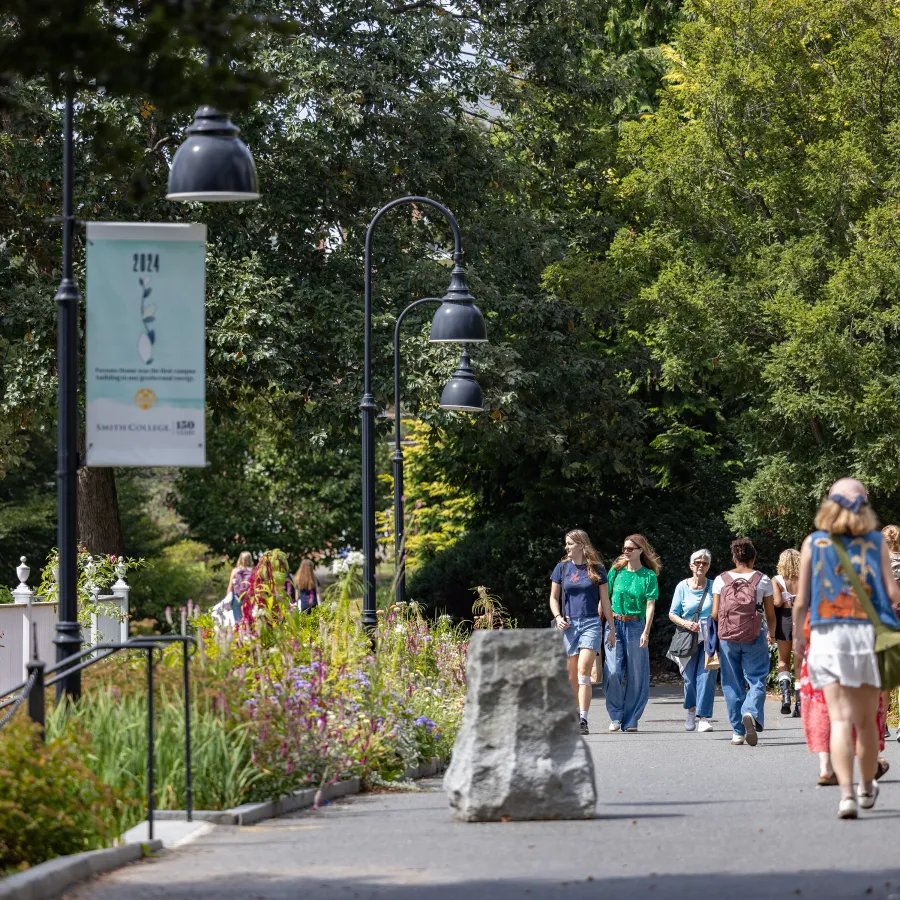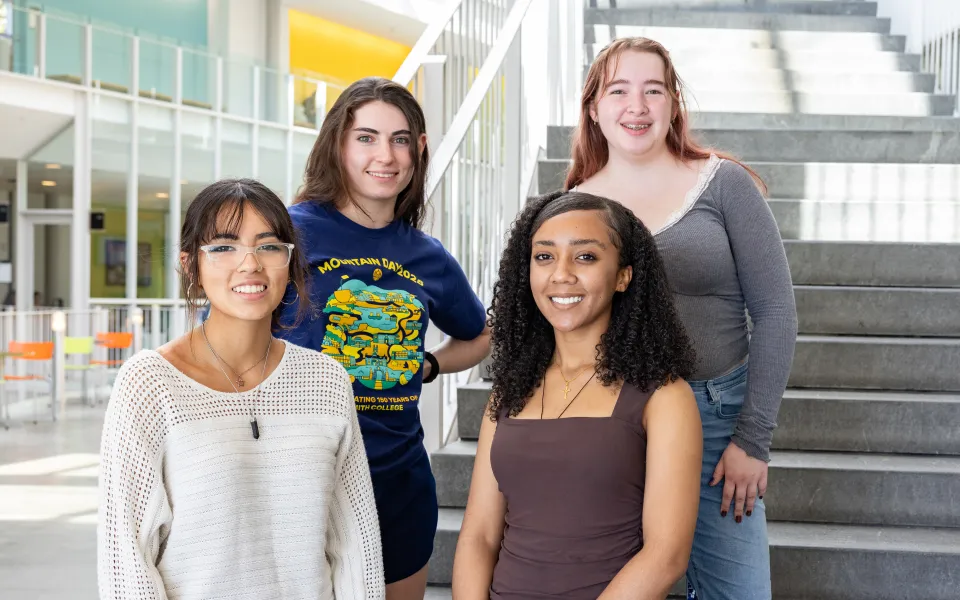‘A Fervor for Learning’
Campus Life
With the fall semester in full swing, members of the class of 2029—the largest and most diverse in recent college history—reflect on what drew them to Smith
Published September 29, 2025
When applying to colleges, Tensae Mekonnen ’29 was looking for an alternative to the large public universities in her Las Vegas hometown—a smaller, friendlier place, she says, “where my voice could be heard.”
For Mariam Hasab ’29, the first in her Iraqi immigrant family to attend college in the U.S., affordability and proximity to her mother and younger sister in New Bedford, Massachusetts, topped her list.
For Julia Boyce ’29, Smith’s Ada Comstock Scholars program for nontraditional-college-age students offered a path to pursue her passion for engineering. “I had gotten my associate’s degree and I had a job, but I wanted more education,” says Boyce, who is from Rhode Island.
In choosing Smith, the three students joined the largest and most diverse entering class in recent college history. The 698 members of the class of 2029 were selected from more than 8,000 applicants—the third-largest pool in Smith’s history, according to the Office of Admission.
The newest Smithies arrived on campus in late August from 45 states and 38 countries. Some 40% are U.S. students of color—up from 34% last year—and 20% are the first in their families to attend college.
This year's entering class also includes a record number of 22 Dora Windes Zollman Scholars, the college’s top academic scholarship.
Among the factors that have helped heighten student interest in Smith are the college’s financial aid offerings—including the elimination of loans from student aid packages, says Joanna May, vice president for enrollment. “The growth in our financial aid budget has been significant,” she notes. “We meet the full demonstrated need for every student without loans, and nearly two-thirds of the entering class are receiving Smith financial aid.”
Expanded outreach efforts, including campus-visit programs and partnerships with college-access programs, such as QuestBridge and Posse, are also bringing new students to Smith. “We’ve always had relationships with community-based organizations, but now we’re working with them with more intention,” says Deanna Dixon, dean of admission.
Olivia Espino ’29 is among the 20% of this year’s entering students who discovered Smith through a community-based organization. Espino was a participant in the nonprofit QuestBridge program, which matches low-income, high-achieving high school students with top colleges.
“My parents didn’t go to college and all my life, that was my goal,” says Espino, who hails from Santa Barbara, California. “Most people in my city go to community college, but I wanted to go to a four-year college. Just discovering that was possible was amazing.”
On her campus visit, Espino was struck by “the really apparent sense of community” at Smith.
“It felt safe and vibrant,” says Espino, who plans to major in sociology and Spanish. “Everyone is so kind and helpful. I’m excited to join a lot of clubs and affinity groups for other first-gen and Hispanic students.”
Some members of the class of 2029 are (clockwise from left) Olivia Espino, Julia Boyce, Keira Quinn, and Tensae Mekonnen.
Photo by Jessica Scranton
Hasab—another member of this year’s QuestBridge cohort—says that while she began her college search focused primarily on affordability, Smith’s open, liberal arts curriculum also influenced her choice to attend.
“There are reasons I wanted to go to college other than getting a job,” she explains. “When you come from an immigrant family, you’re not supposed to go into the arts. I love English and I also want to major in film studies. Being here with people who want to succeed in all kinds of subjects—it’s given me a new sense of authority over myself.”
Attending a women’s college was another reason some students chose Smith.
For Ada Comstock Scholar Julia Boyce, it was a relief to find a program where women’s contributions are valued. As one of the few women working for an engineering company, she experienced discrimination and harassment, yet she didn’t want to give up on the field.
“I love doing math and problem solving. I just have that gene,” Boyce says. “I heard about Smith from a friend and it seemed like the best fit.”
The college’s mission to educate women to be leaders still resonates, says Keira Quinn ’29, a first-generation student from Albany, New York.
“There are a lot of stereotypes about my generation and how we aren’t capable, or don’t have as much of a desire to learn,” she adds. “But we do! We have more challenges. We also have a fervor for learning.”
In her remarks at this year’s welcome assembly, Vice President May described some remarkable members of the class of 2029: Dana Warren of Westhampton, Massachusetts, who, in fifth grade, invited her entire school to hear Civil Rights icon Ruby Bridges speak at Smith; Jessie Yan of California, who is already an internationally acclaimed chess player; and Nikolina Gvozdenovic, who landed an internship at the National Institute of Theoretical Physics as a senior in high school in Italy.
Yet, what truly makes the class of 2029 remarkable, May emphasized, is their potential. “Not your grades or your activities or your essays—though those were impressive,” she noted, “But rather, who you are already and who we think you will become here with the resources of Smith around you.”
That’s a message that rings true for Tensae Mekonnen ’29, whose parents came to the U.S. from Ethiopia.
“I wanted to break the generational barriers and earn a STEM degree–to have opportunities my family didn’t have,” she says. “It’s amazing to see the opportunities I have in front of me!”

